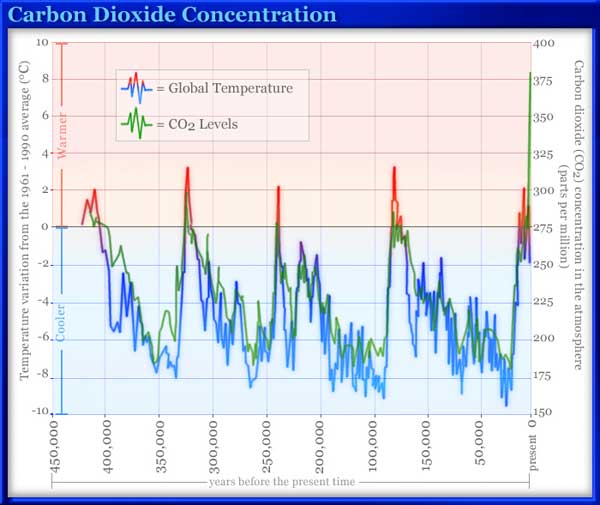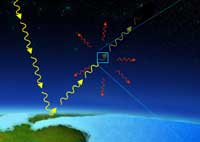Global Climate Change and Energy
Is the global climate changing? Is the world getting warmer?
If you look at the graph below of global temperature changes over the past 150 years, the answer would have to be yes. But what if we look at the past 1,000 years, 100,000 years, or more? And why should YOU care if indeed our world is getting warmer?
The full story is very complicated. In this new section of our Web site, we present a unique collection of scientific articles that will help you learn, think, and shape your own ideas about the changing climate, and about what it means.
We invite you to actively investigate for yourself the facts, concepts, and theories. Take the time to explore the graphs, simulations, and animations, in order to better understand what global warming is all about and what can be done to reduce it.
We hope you can join us in this important mission of learning, understanding, and acting!
Read about the latest report on Global Warming from the Intergovernmental Panel on Climate Change

What do we know about the Earth's climate in the past?
Let's start by examining Global Temperature History…
How do we know what the temperature of the Earth was like thousands and millions of years ago when there were no thermometers?
We can estimate temperature by other means. Trees, coral, and ice cores from Greenland and Antarctica give us clues. Find out how we fill in missing pieces with this Proxy Data…
What determines global temperature?
|
Greenhouse effect Click for animation. |
The Earth is heated by the Sun. But if that were the end of the story the world would be very cold. The greenhouse effect keeps the Earth at a comfortable temperature.
So why does global temperature change?
Carbon dioxide is constantly moving into and out of the atmosphere in a process known as the carbon cycle.
There is a close relationship between carbon dioxide levels in the atmosphere and global temperature.
Are there other factors that affect global temperature?
Astronomer Milutin Milankovitch theorized that the changing relationship between the Earth and the Sun affects the Earth’s climate.
What do people have to do with this?
Since the Industrial Revolution people have been affecting the carbon cycle.
Human intervention has increased the concentration of carbon dioxide in the atmosphere to its highest level in hundreds of thousands of years. Look closely at the right-hand edge of the graph below.

So what’s the problem? Is global warming a bad thing?
Global warming will have a major impact on the way we live. Sea levels will rise, causing flooding of densely populated coastal areas. The intensity of tropical storms will increase. Many agricultural areas that are already suffering from drought will become drier.
If we know there’s a problem, why don’t we do something about it?
A pattern of behavior known as Tragedy of the Commons may help explain why we are allowing global warming to continue.
Take the Climate Challenge—decide the future of the planet
As part of the carbon cycle the oceans are constantly removing carbon dioxide from the atmosphere. Try this activity to experiment with how carbon dioxide is absorbed by water.
What can we do?
It is too late to stop further increases in global temperature. The carbon dioxide levels now in the atmosphere will cause global temperature to rise further. But we can stabilize and improve the long-term situation by several means:
-
Reduce emissions of carbon dioxide by using energy more efficiently.
-
Use alternative energy sources that do not produce carbon dioxide emissions— solar, wind, nuclear, geothermal and hydroelectric.
-
When we do burn fossil fuels, capture and store the resulting carbon dioxide rather than letting it go into the atmosphere.
This content has been re-published with permission from SEED. Copyright © 2025 Schlumberger Excellence in Education Development (SEED), Inc.


